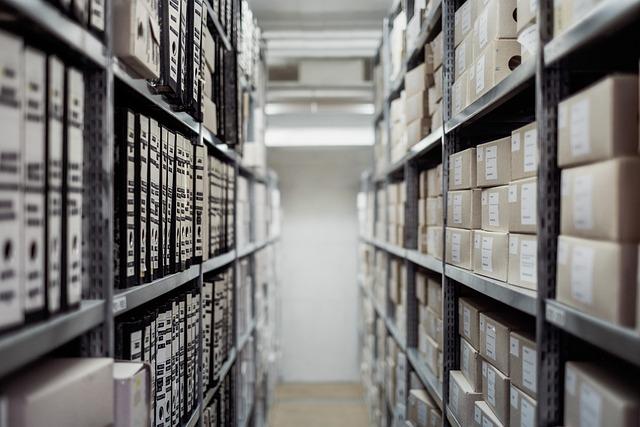In the delicate tapestry of our lives, each thread represents a story, a memory, a whisper from the past that shapes who we are today. As we navigate the ever-evolving digital landscape, the question arises: how do we capture these ephemeral moments and preserve them for future generations? In an age where technology offers us unprecedented tools, the opportunity to safeguard our family histories has never been more attainable. This article invites you on a heartfelt journey to explore the myriad ways we can digitally immortalize the stories of our ancestors and loved ones. Together, we’ll uncover how to transform cherished memories into a living legacy, ensuring that the echoes of the past resonate vibrantly in the lives of those yet to come. Whether you’re a seasoned genealogist or someone just beginning to trace the branches of your family tree, this guide will equip you with the insights and techniques to honor and preserve your family’s unique narrative.
Unearthing Treasures: Digitally Archiving Your Familys Unique Story
In today’s digital age, preserving family history has taken on a new dimension, allowing us to protect our cherished memories for future generations. Start by gathering all available resources, such as old photographs, letters, and diaries. Consider using a high-quality scanner to digitize these precious artifacts. Ensure that you save them in a widely-used format like JPEG or PDF to maintain accessibility. As you digitize, create a filing system that organizes documents by family member, event, or decade. This method not only streamlines the archiving process but also makes it easier to share these treasures with relatives.
Once your collection is digitized, think about using cloud storage solutions to safeguard your family’s story. Platforms like Google Drive, Dropbox, or specialized genealogy services can provide secure and convenient access. For an interactive experience, consider creating a family website or blog, where you can share stories, images, and even audio recordings. To enhance the narrative, collaborate with family members to gather anecdotes and insights, turning your archive into a living tapestry of your family’s unique journey. Remember, every story has a heartbeat, and through these digital tools, yours can echo through the ages.

Heartfelt Memories in Pixels: Creating a Digital Family Album
In today’s fast-paced digital era, preserving family history has taken a modern twist, allowing us to capture the essence of our loved ones in vivid detail. By creating a digital family album, you not only safeguard cherished memories but also breathe new life into stories that define your family’s legacy. This journey begins with selecting meaningful photographs that resonate with the essence of your family’s story. Consider using high-resolution images to ensure clarity and vibrancy, capturing the nuances of each smile and embrace. Whether it’s a candid shot from a family reunion or a snapshot of a quiet moment at home, these images will become the foundation of your digital narrative.
To craft a truly engaging digital album, think beyond the typical slideshow. Utilize the power of captions and anecdotes to add depth to your images. Share the stories behind the smiles and laughter, and don’t shy away from including those quirky family traditions that bring everyone together. Here are some ideas to enhance your digital album:
- Video Clips: Incorporate short video clips to capture the dynamics of family interactions.
- Interactive Elements: Use WordPress plugins to create interactive elements like clickable family trees or timelines.
- Music and Sound: Add a soundtrack that resonates with your family’s unique vibe, from your grandmother’s favorite tune to your children’s giggles.
By embracing these creative elements, you transform your digital family album into a living, breathing testament to the love and connections that bind your family together.

Safeguarding Ancestral Voices: Tips for Recording Oral Histories
Preserving the rich tapestry of your family’s past begins with the heartfelt conversations you have with your loved ones. To ensure these stories endure, approach the process with sensitivity and a keen ear for detail. Start by creating a comfortable environment where your storytellers feel at ease to share their memories. This might mean visiting them in their homes or finding a quiet space free from distractions. As you sit down to record, consider using digital tools that are intuitive and reliable, such as high-quality microphones and user-friendly recording apps. Testing your equipment beforehand can prevent technical hiccups that might disrupt the flow of conversation.
To capture the essence of these oral histories, focus on asking open-ended questions that encourage expansive responses. Instead of seeking specific dates or facts, prompt your narrators with questions about their feelings, experiences, and reflections. This approach not only garners richer stories but also builds a deeper connection. Additionally, be mindful of the cultural and personal nuances in their tales. Respect and honor their narratives by ensuring they have control over what is shared and how it is preserved. Lastly, think about how you’ll store these recordings. Digital archiving solutions like cloud storage offer longevity and accessibility, allowing future generations to listen to the echoes of their ancestors’ voices.

Preserving the Past: Best Practices for Storing Digital Family Archives
As we transition our cherished family memories into the digital realm, safeguarding these treasures becomes paramount. Begin by selecting reliable storage options. Consider using a combination of cloud storage and external hard drives to ensure your digital archives are both accessible and secure. This dual approach offers a safety net against data loss, whether from accidental deletion or hardware failure.
When organizing your digital archives, adopt a consistent naming convention for files and folders. This practice not only enhances searchability but also helps future generations navigate through the family history with ease. Here are some tips for maintaining an orderly archive:
- Use descriptive file names that include dates and key details.
- Organize files into thematic folders, such as ‘Weddings,’ ‘Vacations,’ or ‘Family Reunions.’
- Regularly back up your data, setting reminders for periodic checks and updates.
- Consider creating a master index or spreadsheet to catalog significant details about each file.
By adopting these best practices, you not only preserve your family’s past but also create a legacy of stories and experiences for future generations to explore and cherish.


